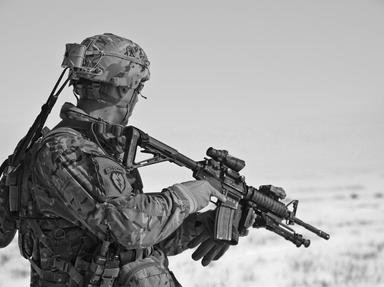Quiz Answer Key and Fun Facts
1. In which country was the first weapon developed that demonstrated the basic principles of a firearm?
2. In the 15th Century, a major development in weaponry took place with a technology that greatly assisted the firing of a handgun. What were these early pistols called?
3. Which European countries were involved in the earliest battles to be decided by firearms?
4. Who in the 19th Century patented the first multi-round revolver in a form that can still be recognised?
5. Wars in Europe led to a rapid development in weapons. What was the name of the musket that is credited with helping the British win wars on battlefields across the world?
6. Who developed an effective repeating rifle and walked into the White House to show it to an American president?
7. Who was first to develop an effective self-loading automatic pistol?
8. At the start of World War One, what was the standard rifle issued to British soldiers?
9. First produced in 1949, which of these went on to become the most widely produced assault rifle of all time?
10. For many years the rate of fire of any gun was limited by the dexterity of the user and how fast they could manually eject each spent round in preparation for the next. Who was it invented the first machine gun that could automatically load and eject bullets?
Source: Author
darksplash
This quiz was reviewed by FunTrivia editor
stedman before going online.
Any errors found in FunTrivia content are routinely corrected through our feedback system.

